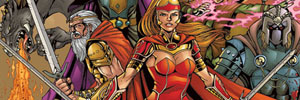But what about this other group of ladies character in Frankenstein, mom, whom that have epic celerity matches her death?
It superior trait regarding Shelley’s narrative has been seen in advance of, and you can explained because the a sign of Frankenstein’s very own need certainly to perpetuate the loss of the mother (and, in fact, from motherhood overall) to help you suffer their solipsistic and savagely masculine commonly so you’re able to creative liberty. Frankenstein hence gets — due to the fact men creator — guilty of the brand new fatalities of all the parents from the unique, obtaining the fresh new feminist end the male creativeness, at the very least from inside the West lifestyle, was aggressive in order to girl. Margaret Homans leaves the idea succinctly: “brand new book is mostly about the new collision ranging from androcentric and you can gynocentric theories of design, a crash one to leads to the brand new denigration from maternal childbirth using the circumvention by the male creation.” 20 (113). The more serious tension Shelley wrestles that have pops up away from seeing the mother while doing so just like the holder away from life and best dating app free breeder off demise. twenty two Mothers inside the Frankenstein try categorically inactive since their physical setting is actually primordially defiled. The precipitous death therefore reiterates new tragic contradiction off thing lives: that, on conditions out of William Blake, “lifetime lifetime abreast of passing.”
While this discovering remains true towards the details of the fresh new story and you will uncovers a tension certainly present therein, it fails to take into account the options one “maternal childbirth” is actually alone an uncertain most readily useful
ple witness to this paradox. It has become almost obligatory for critics of Frankenstein to cite the long list of deaths that dogged the early life of its author: her mother Mary Wollstonecraft expiring eleven days after Mary’s birth; her half-sister Fanny Imlay poisoning herself and referring obliquely in her suicide note to her illegitimacy; Percy’s first wife Harriet Westbrook dying pregnant by another at the time of her suicide; and finally, Mary’s first daughter passing quietly two weeks after her premature birth. 22 All of these deaths implicate the mother by exaggerating the proximity of life’s origin and end. I am not trying to suggest that this biographical context accounts directly for the identification of death and motherhood in Frankenstein, but rather that it urges us to interrogate this fatal pattern for its psychological implications. What we will discover, I believe, is that Shelley represents motherhood as she does as much to evade its sinister imperatives as to criticize an androcentric theory of creation.
It’s fascinating to note in connection with this that Shelley’s updates from the woman unique to have republication in 1831 significantly boost the part out of Frankenstein’s mommy throughout the crisis from his innovation. On 1818 version, Caroline Beaufort doesn’t have palpable lives because mommy up until Frankenstein says her along with Elizabeth, his suggested fiance: “I have commonly heard my mother say, you to definitely she was at the period the most wonderful man one to she got previously seen” (29), a situation one to “calculated my personal mommy to consider Elizabeth as my future wife” (29). Surprisingly, Frankenstein’s mom, rather than he himself, imagines the woman substitute for since the target out-of his desire; zero fundamentally do good “mother” appear inside text than just she is eclipsed from the a “coming partner.” The mother doesn’t have genuine lifetime regarding 1818 edition since the the lady sexual fertility guarantees her own fatality. Shelley softens which dark look at motherhood within the revise of the widely developing the character of Caroline Beaufort. 23
Together with effect, due to the fact Mary Poovey provides professionally revealed, should be to change the fresh ideological bias of your book; where Frankenstein’s mom was once absent, their emphatic exposure now initiates a proto-Victorian affair off domesticity
Beneath the surface of this revision in the interest of social norms, however, still lingers the tragic paradox of impure birth. For the rehabilitation of Caroline Beaufort has as its psychological correlative a denial of the biological function of maternity. In the famous introduction to the 1831 edition [Introduction 1] Shelley adds an account of the genesis of her novel that severely qualifies its effort to accommodate the social norm of the nurturing mother. The details of the account are familiar: Shelley’s story comes to her in a dream, which as Homans deftly describes it, is “a dream moreover that is about the coming true of a dream” (112); Frankenstein, “the pale student of unhallowed arts” (228), realizes his lifelong ambition of animating dead matter. But we need to attend as closely to what this dream leaves out as to what it includes. For it ends with an encounter of uncanny implications. Frankenstein withdraws to rest, only to be disturbed a moment later: “He sleeps; but he is awakened; he opens his eyes; behold, the horrid thing stands at his bedside, opening his curtains and looking on him with yellow, watery, but speculative eyes” (228). Surely Homans is right to read this scene as dramatizing the “conception” (109) of the book that Shelley herself describes with the phrase “my hideous progeny” (229).
Category: Uncategorized










